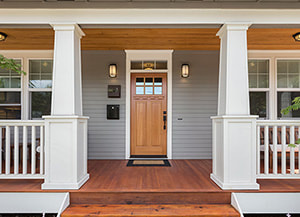 According to the National Association of Realtors (NAR), 2020 home sales climbed to the highest level seen since 2006. The year closed with positive gains in existing-home sales, with every sales region in the country posting double-digit year-over-year increases in December. Median existing-home prices were also up in every region, rising an average of 12.9% from a year earlier. December marked the 106th consecutive month of year-over-year price gains. According to Lawrence Yun, chief economist for NAR, the housing market should continue to show strength in the coming months. “Although mortgage rates are projected to increase, they will continue to hover near record lows at around 3%. Moreover,” he adds, “expect economic conditions to improve with additional stimulus forthcoming and vaccine distribution already underway.” Fewer Listings to Choose From The rise in home prices can be attributed in part to the lack of supply. In December, total housing inventory fell 16.4% from a month earlier and 23% from a year earlier. At the current sales pace, all unsold inventory would supply the market for only 1.9 months —an all-time low. In comparison, there was a 2.3-month supply available in November 2020 and a 3.0-month supply in December 2019. Homebuilders and construction companies are helping to alleviate the shortage of homes; housing starts reached an annual rate of close to 1.7 million, with a high percentage of that focused on single-family homes. However, according to Yun, “It will take vigorous new home construction in 2021 and in 2022 to adequately furnish the market to properly meet the demand.” Properties Flying off the Market One consequence of high demand and low supply is that homes are being sold in record time due to increased competition. In December, the average property remained on the market for only 21 days, unchanged from a month earlier but down from the 41 days recorded in December 2019. Of all the homes on the market in December 2020, 70% sold in less than one month. Who’s Buying Homes? First-time buyers remained optimistic about the housing market. This group accounted for 31% of all sales in December, unchanged from a year earlier. According to the NAR “2020 Profile of Home Buyers and Sellers,” first-time buyers made up 31% of all buyers in 2020. Individual investors and second-home buyers—a group responsible for many cash sales—accounted for 14% of all market activity in December. All-cash sales made up 19% of December’s transactions. Foreclosures and short sales accounted for less than 1% of all sales. Regional Breakdown for December 2020 Northeast - Existing-home sales annual rate of 930,000; an increase of 4.5% from November 2020 and 27.4% from December 2019. At $362,100, the median sales price increased 19% from December 2019. Midwest - Existing-home sales annual rate of 1.59 million; sales remained unchanged from November 2020 but increased 26.2% from December 2019. At $235,700, the median sales price increased 13.7% from December 2019. South - Existing-home sales annual rate of 2.86 million; an increase of 1.1% from November 2020 and 20.7% from December 2019. At $268,100, the median sales price increased 11.3% from December 2019. West - Existing-home sales annual rate of 1.38 million; a decrease of 1.4% from November 2020 but an increase of 17.9% from December 2019. At $467,900, the median sales price increased 14.2% from December 2019.
0 Comments
 Low inventories for homes across the United States have created a seller’s market. When the supply of homes on the market is low and the demand is high, prices rise and buyers often have to compete against one another. How do you win when there are multiple offers on the table? A home that’s in good shape and priced right will have homebuyers vying for it within days—or even hours—of hitting the market. The potential buyer with the most attractive offer is likely to wind up winning. Here are three tips for making a strong offer: Make Your Best Offer First In a seller’s market, in which there are lots of competing buyers, homes usually sell at or above asking price. If you make an offer and there are multiple offers higher than yours, you likely won’t get a counteroffer. If you have a price in mind that you’re willing to pay for a home you love and you can afford the payments that go with it, it’s a good idea to make your best offer first. A low-ball offer can kill negotiations before they even start. Be Flexible with the Timeline The timeline of the sales process is often important to sellers. They might have mortgage payments on their new home starting soon and will push for a fast close, or if they don’t have another place yet, they’ll want to push back the closing date as long as possible. When making an offer, it’s reasonable to consider the seller’s timing wishes. If you can be flexible, your offer will be more appealing. Are You Willing to Waive It? The less contingencies, the more attractive your offer will be. You may be tempted to waive your right to a home inspection or the inspection contingency that allows you to back out of the sales contract. Similarly, you might be willing to forgo an appraisal contingency, which would mean you’d bring more money to the table at closing. Remember, contingencies are mostly in place to protect homebuyers. It’s important to consult with an experienced real estate agent before agreeing to waive any protections. It can be nerve-wracking to be a homebuyer in a seller’s market. The excitement that comes with finding the perfect home can quickly disappear when you find out the home has multiple offers. Make your best offer upfront and be as flexible as possible to ensure a good chance at securing your dream home. Return to Newsletter |
AuthorA variety of pertinent real estate topics and tips from various authors and contributors. Archives
December 2024
Categorieshow much home can i afford?*
|


